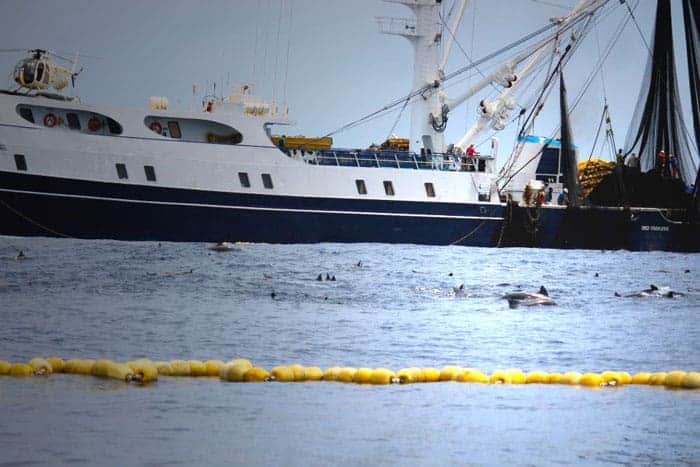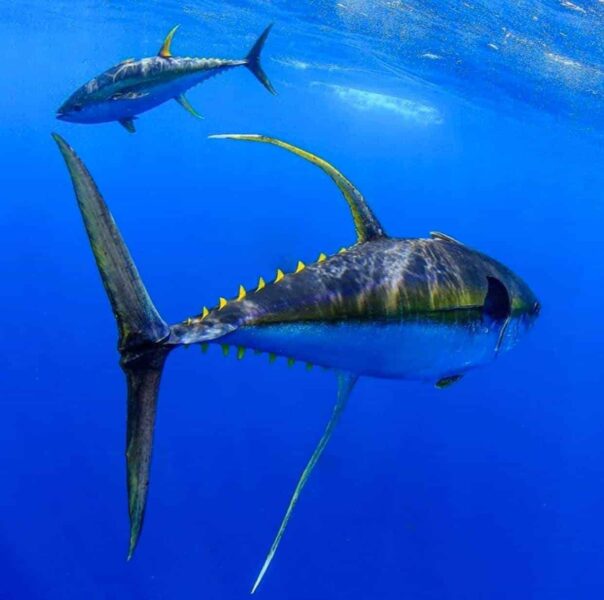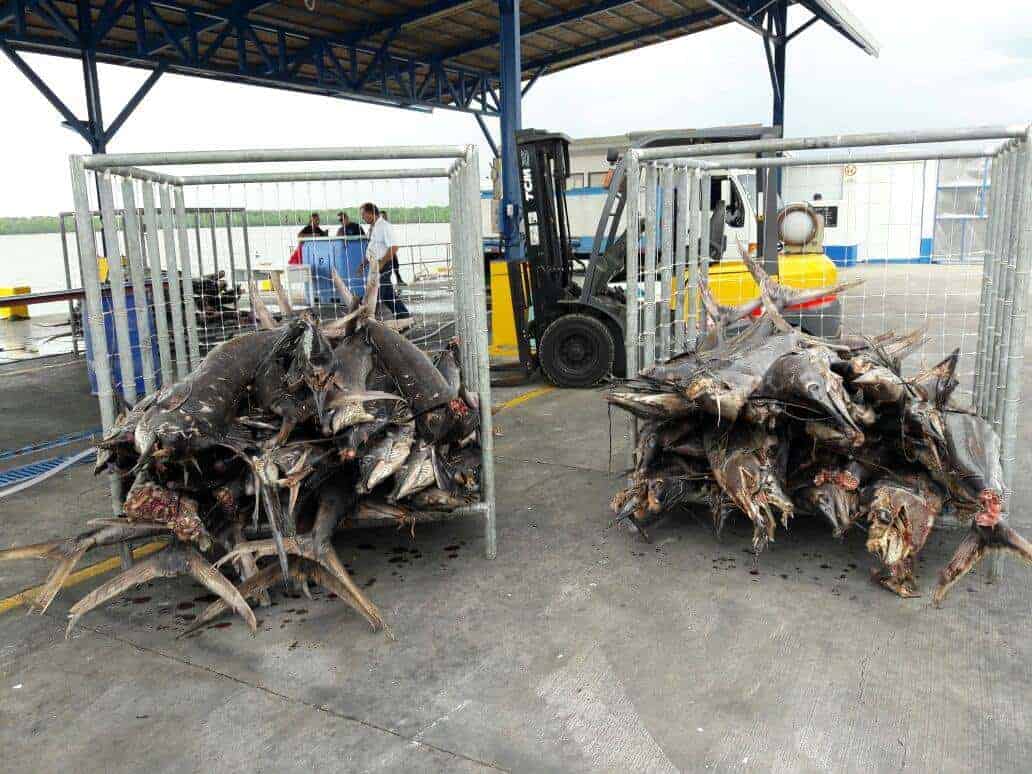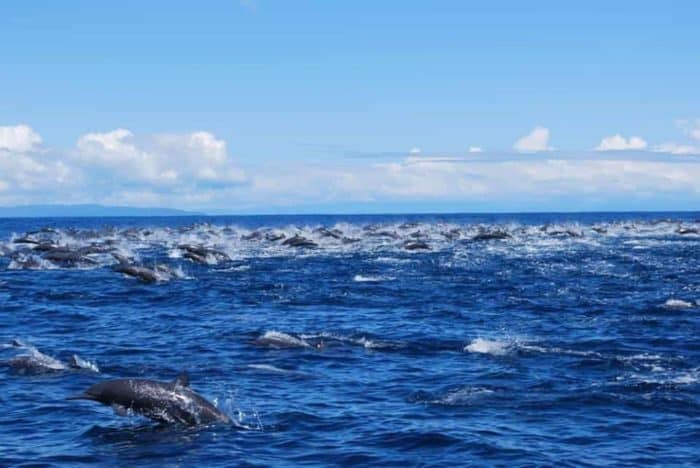For more than two years, a couple of proposed laws have been floating in and out of the Costa Rican congress regarding tuna reform for the foreign purse sein net fleets that fish Costa Rica’s marine economic zone, which is 11 times greater than the country’s terrestrial area. To this date it has yet to be voted on.
Costa Rica has no tuna purse sein fleet of its own and sells 60-day licenses to foreign flagged boats to supply the cannery in Puntarenas with product. They were extracting 9,000 tons annually for the plant. That amount was raised because of demand during the pandemic to just over 11,000 tons. At one time they were extracting 25,000 ton a year. One foreign tuna seiner extracts more tuna in one 60 day trip than the entire National commercial fishing fleet of 400 boats extracts in one year.
The Executive President of Incopesca, Daniel Carrasco, who governs all fishing activities in Costa Rica, recently attended workshops with different sectors of sport and commercial fishermen, cannery representatives, seafood exporters as well as members of congress regarding the proposed law. He recently sent his recommendations to the Vice Minister of Agriculture Marlon Monge in a 15-page letter to the Minister.
The letter covered issues concerning several things including, zoning, dolphins and other bycatch, licenses, and establishing a National purse seine fleet. Two items affect Costa Ricans the most, dolphins and zoning. This column does not have space to cover 15 pages item by item so I will address those two.

Carrasco’s letter to the Vice Minister started:
“With the pleasure of greeting you, I am writing to you in order to follow up on the sessions of work that have been carried out for the review of Legislative Files N ° 21,316 and 21,531, being that both projects contemplate an amendment to the Fisheries and Aquaculture Law (LPA), which promotes the best use of the Tuna resource.”
In this regard, I allow myself to reaffirm the commitment of the Costa Rican Institute of Fisheries and Aquaculture (INCOPESCA) to continue participating in such an important process and contribute the necessary inputs to help decision-making to promote the
development of the fishing sector under the principles of sustainable development; as well as guide national actions to achieve a timely and effective management that satisfies the interests of the country.”
Oh, really!
A little History: Yellowfin tuna and several species of dolphins have a symbiotic relationship in Costa Rica´s Pacific waters. They swim together. Giant schools of tuna with massive pods of dolphins at times dolphin pods in the thousands.
Up until 2014 foreign tuna boats just about had the run of Costa Rica’s entire Economic Zone. They could set their nets in entire Costa Rican waters up to within 12 miles of the coast while the majority of the National commercial and sport fishing sectors are limited by law to fish within 40 miles of the coast and compete for the same resources.
Costa Rica was only benefiting $37 for every ton of tuna extracted by the foreign vessels from the sale of licenses. Over the years, more than 3000 tons of bycatch, most of it dead was also captured and destroyed from our waters.
This included dolphins, sharks, turtles, manta rays, sailfish, marlin and a total of 100 or more other species. Also over the years more than 6 million dolphins have perished in the Eastern Tropical Pacific in tuna nets. Today they use a method to release most of the dolphins but thousands are harassed and captured over and over again each year. It is estimated around 2000 perish annually in the nets and no one knows how many die after release. Mothers and young are often separated and many of the calves cannot survive on their own..
In 2014 a decree was passed creating protected zones from the tuna fleet for a total of roughly 200,000 square kilometers, (120,000 square miles). Included in that was a coastal zone that extended 40 miles from the coast with an additional 5 mile buffer zone.
Couple of years ago Carrasco asked Da. Marina Marrari if Incopesca could justify moving the tuna boats out from 45 to 60 miles. Marrari, a Phd is a marine scientist and satellite expert who worked for NASA before moving to Costa Rica. She had begun collecting catch data from the sport fishing fleet and comparing catch records before and after the 2014 tuna decree inside the 40 mile coastal protected area.
At the time she was a private consultant and today is Executive Director of the Federacion Costarricense de Pesca. (Costa Rican Fishing Federation) She also noted in her report that there were two “subspecies” of dolphins that lived mainly within 60 miles of the coast and a 60 mile buffer would protect those two subspecies..
Marrari has continued her research over the last two years and concluded moving tuna boats out further than 60 miles is a much better idea. Carrasco decided to include only her two year old preliminary results in Incopesca’s recommendation letter rather than the most current data which has been presented publicly many times and shows 60 miles is not enough.
The tuna reform law has bounced in and out of session in the congress and in that time others groups have had time to weigh in on the issue. Although Incopesca’s recommendation to congress is move the tuna boats out only 60 miles, they and maybe the tuna industry are the only groups that think that is far enough.
The feeling of the different fishing and conservation groups range from moving the boats 100 to 200 miles from the coast to not allowing the netting of dolphins at all in the tuna purse seine industry at all. Over 80% of the net sets in Costa Rica by tuna boats currently surround dolphin pods.
Carrasco’s letter to the Vice Minister continued, “Incidental fishing and impact on other species that are fished with tunas. Purse-seine fishing incidentally captures more than 100 species that are not targeted, with the majority dying in the nets. Of the total purse-seine sets that are made in Costa Rican waters, around 70% have incidental fishing impacts on other species (Table 3).

Dolphins, sharks, rays and manta rays, dorado, marlins and sailfish are among the most affected species (Table 4). Among the coastal dolphins (coastal spotted and coastal spinner), they are exclusively affected within the first 60 nautical miles.
These are PreSubspecies populations of these restricted dolphins mainly within the first 60 nautical miles, as can be seen from the observed catches (Table 4). In this way, if the first 60 nautical miles of purse-seine fishing are protected, with them the survival of the tunas associated with these herds, as well as the other fauna that exists in this coastal band, will be ensured.”
A well written paragraph, written by professional in law rather than science with all the finesse of the best sleight of hand magician. To someone who does not know, it appears to be great, it would protect the dolphins. A quick check with the University of Costa Rica’s CIMAR, (the ocean science department) would have told him about the super pods of spinner, spotted, and common dolphins that inhabit the entire Costa Rican territorial waters. These dolphins are constantly affected by tuna purse seine boats.
The adding of protected areas in our coastal waters have actually made the tuna industry more efficient. Their average catch rate per net set has gone up from around 12 tons per set in 2014 before zoning to nearly 20 tons per set in 2019. Ocean management and zoning works.
Next: Part 2, The effects of the tuna industry on Coastal Communities
Todd Staley has run sport fishing operations in Costa Rica for nearly 30 years and works in marine conservation. He currently is Communications Director at FECOP, the Costa Rican Fishing Federation (www.fecop.org), serves on the International Game Fish Association’s Central America Council, and oversees the fishing operation at Crocodile Bay Resort. Contact him at wetline@hotmail.com


